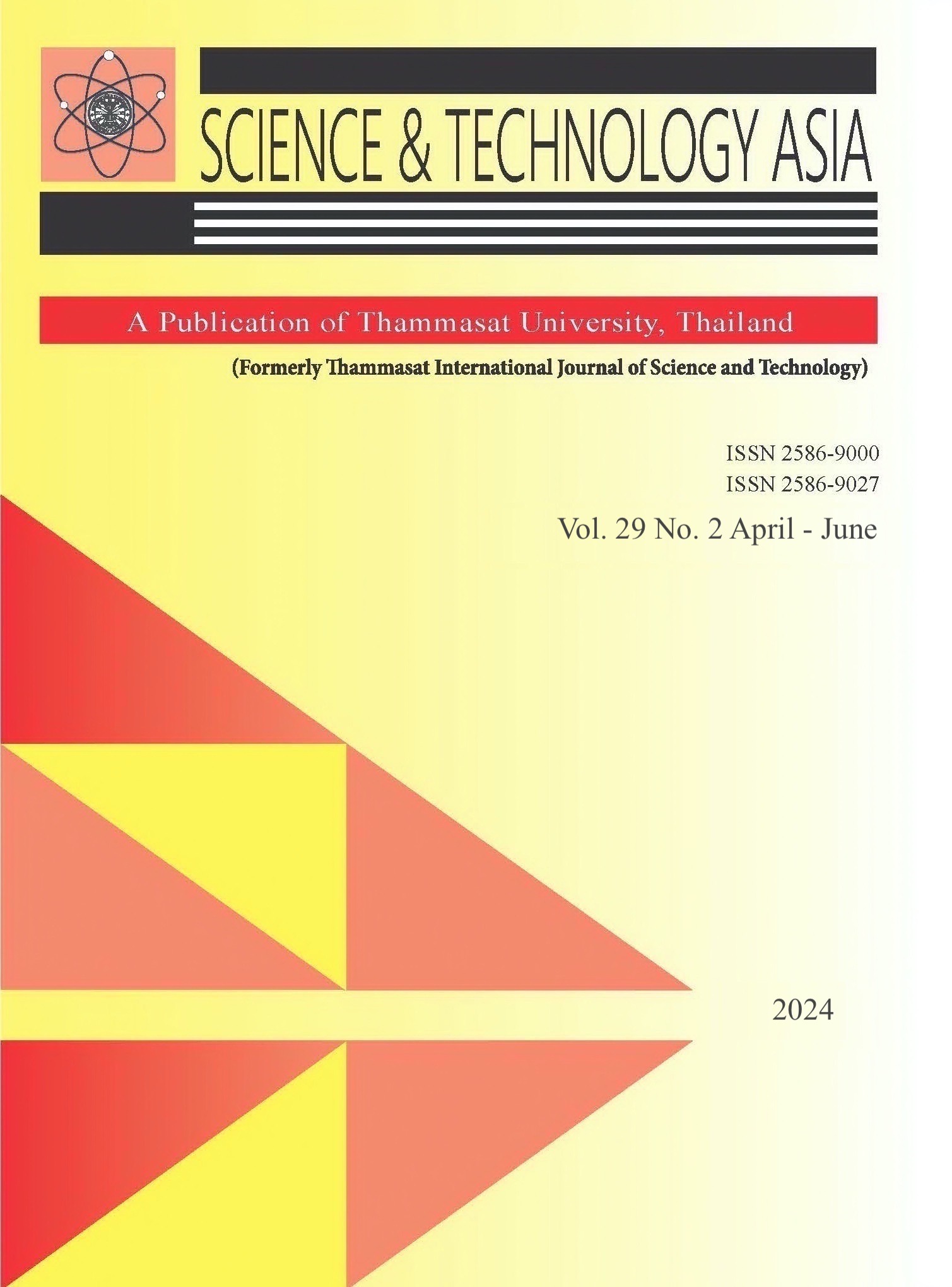Efficacy and Safety of a Facial Mask Containing Aquilaria crassna Leaf Extract: a Double-Blind Randomized Controlled Trial
Main Article Content
Abstract
Aquilaria crassna Pierre ex Lecomte (Agarwood) is a common plant in Southeast Asia. Both A. crassna leaf extract and its component, mangiferin, have been reported as having antioxidant, anti-inflammatory and antiglycation activities. The objectives of this study were, first, to test the standardized aqueous extract of A. crassna leaves (eAC) and formulations containing eAC, for skin irritation, and second, to test the cosmetic efficacy of facial masks containing eAC via a double-blind, randomized, placebo-controlled trial. For the skin irritation tests, patches containing either 1% or 5% eAC in water, or 0.1% and 0.2% eAC formulation were applied to the skin and the extent of skin irritation was measured by the Mean Cumulative Irritation Index. To test the cosmetic efficacy, facial masks containing a formulation of 0.2% eAC, or a placebo formulation, were randomly applied to either the left or the right half of the face of the 33 participants for 8 weeks. The result showed that the formulae containing 0.1% and 0.2% eAC caused no skin irritation. However, higher eAC doses of 1% and 5% in water caused mild irritation. The efficacy study showed that the formulation of 0.2% eAC significantly increased skin hydration from 30.9±1.3 (baseline) to 39.6±1.4 at week 4 and 45.9±1.3 at week 8 (p=0.001), while the effect of the placebo facial mask was negligible. Skin elasticity was not affected by either treatment. In conclusion, eAC at appropriate concentrations improves skin hydration while having no adverse or toxic reactions, thus showing promise as a bioactive ingredient in cosmetic products.
Article Details

This work is licensed under a Creative Commons Attribution-NonCommercial-NoDerivatives 4.0 International License.
References
Ray G, Leelamanit W, Sithisarn P, Jiratchariyakul W. Antioxidative compounds from Aquilaria crassna leaf. J Pharm Sci. 2014;41(4):54-8.
Pennacchio M, Jefferson L, Havens K. Uses and abuses of plant-derived smoke: Its ethnobotany as hallucinogen, perfume, incense, and medicine: Oxford University Press; 2010.
Wongwad E, Pingyod C, Saesong T, Waranuch N, Wisuitiprot W, Sritularak B, et al. Assessment of the bioactive components, antioxidant, antiglycation and anti-inflammatory properties of Aquilaria crassna Pierre ex Lecomte leaves. Industrial Crops and Products. 2019;138:111448.
Wang B, Wan J, Gong X, Kuang G, Cheng X, Min S. Mangiferin attenuates renal ischemia-reperfusion injury by inhibiting inflammation and inducing adenosine production. International immunopharmacology. 2015;25(1):148-54.
Wongwad E, Ingkaninan K, Wisuitiprot W, Waranuch N. The fabric facial mask enhanced skin permeation of hydrophilic bioactive compounds in Aquilaria crassna leaf extract. Songklanakarin Journal of Science & Technology. 2021;43(5).
Ehrlich M, Rao J, Pabby A, Goldman MP. Improvement in the appearance of wrinkles with topical transforming growth factor β1 and L‐ascorbic acid. Dermatol Surg. 2006;32(5):618-25.
Mulyanti YS, Kasemchainan B, Mitra PP, Evans P, Hartono H. Evaluation of the Skin Irritation and Sensitization Potential of the Cussons Baby Sensicare Skin Range of Products in Healthy Volunteers. Journal of Cosmetics, Dermatological Sciences and Applications. 2019;9(3):207-15.
Bernauer U, Bodin L, Chaudry Q, Coenraads P, Dusinka M, Ezendam J, et al. The SCCS notes of guidance for the testing of cosmetic ingredients and their safety evaluation-10th revision SCCS/1602/18–Final version (ISSN: 1831-4767 ISBN: 978-92-76-00245-1. 2019.
Ohshima H, Kinoshita S, Oyobikawa M, Futagawa M, Takiwaki H, Ishiko A, et al. Use of Cutometer area parameters in evaluating age related changes in the skin elasticity of the cheek. Skin Research and Technology. 2013;19(1):e238-e42.
Göllner I, Voss W, von Hehn U, Kammerer S. Ingestion of an oral hyaluronan solution improves skin hydration, wrinkle reduction, elasticity, and skin roughness: Results of a clinical study. Journal of evidence-based complementary & alternative medicine. 2017;22(4):816-23.
Azevedo Martins TE, Sales de Oliveira Pinto CA, Costa de Oliveira A, Robles Velasco MV, Gorriti Guitiérrez AR, Cosquillo Rafael MF, et al. Contribution of topical antioxidants to maintain healthy skin—A review. Scientia Pharmaceutica. 2020;88(2):27.
Moreira R, Chenlo F, Torres MD, Prieto DM. Statistical criteria for modelling of water desorption isotherms of sugars. Estimation of sucrose hygroscopic properties from glucose and fructose data. Advances in Food Science and Engineering, I (1). 2017:18-27.
Pfisterer K, Shaw LE, Symmank D, Weninger W. The Extracellular Matrix in Skin Inflammation and Infection. Frontiers in Cell and Developmental Biology. 2021;9(1578).
Scholfield C, Waranuch N, Kongkaew C. Systematic review on transdermal/topical cannabidiol trials: a reconsidered way
forward. Cannabis and Cannabinoid Research. 2023;8(4):589-602.
Ochocka R, Hering A, Stefanowicz–Hajduk J, Cal K, Barańska H. The effect of mangiferin on skin: Penetration, permeation and inhibition of ECM enzymes. PLoS One. 2017;12(7):e0181542


